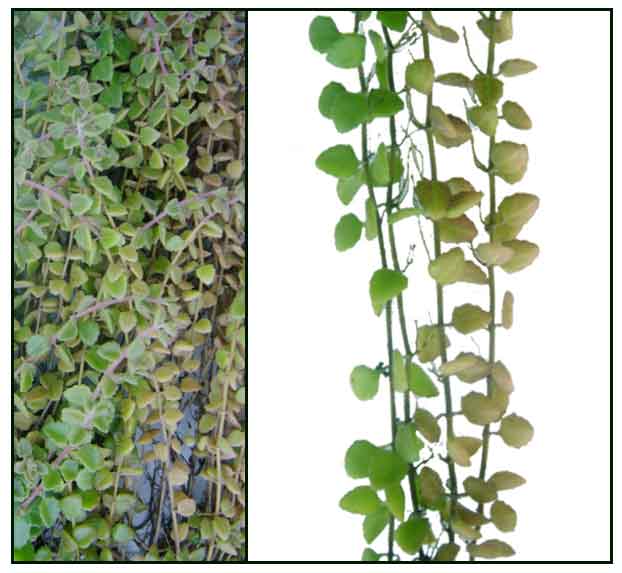|

Botany
Makikitot is an annual, spreading or prostrate,
much branched, slender, smooth or somewhat hairy herb. Stems are usually
reddish, growing up to 20 centimeters in length. Leaves are opposite, distichous, somewhat oblique, elliptic to
oblong, 4 to 7 millimeters long and obscurely crenulate. Involucres are about 1 millimeter long, purplish and borne on
the axils of much reduced leaves or bracts on crowded short branchlets
from the leaf axils. Fruits are capsules, hairy, 3-angled and about 1.5 millimeters long.
Distribution
- Throughout the Philippines
in waste places along roads and trails in fallow, rice paddies,
etc.
- Pantropic.
Constituent
- Contains quercetin, a crystalline
alkaloidal principle.
- Studies revealed phenolics, tannins, flavonoids, steroids.
- Phytochemical screening yielded alkaloids, flavanoids, sterols, triterpenoids, and saponins. (17)
- Study of methanolic extract of whole herb isolated flavan-3-ol isomers, compounds 1 and 2, as catechin and epicatechin, respectively.
Catechins are the part of flavan-3-ols including (+)-catechin, (-)-epicatechin, (-)-ent-catechin, (+)-ent-epicatechin and their derivatives (C-3-O-esters). (21)
Properties
- Traditionally used as an aromatic, astringent, demulcent, stimulant,
vermifuge, antidermatoses, anthelmintic, and laxative.
- Slightly acidic tasting and cooling.
- Studies have suggested antimicrobial, antiviral, antispasmodic, anti-asthmatic, antifungal, anti-inflammatory, hypoglycemic,
and antibacterial properties.
Parts
utilized:
· Entire plant.
· Collect from May to October.
· Rinse and sun-dry.
Uses
Folkloric
· Acute bacillary dysentery,
enteritis, diarrhea: use 15 to 30 gms dried material in decoction.
· Anaphylactic dermatitis, eczema, skin pruritus: use decoction
of fresh material and apply as external wash.
· Poultices of leaves to counteract effects of snake bites.
· Leaves used as efficient vulnerary.
· Latex used for corneal opacities.
· Juice of powdered plants mixed with wine for venomous bites;
also applied externally to the bite.
· Mixed with ammonium chloride, used for dandruff and ringworm.
· Used for coughs as expectorant.
· In Konkan juice used for ringworm.
· In Indo-China plant used as a cathartic.
· In La Reunion plant used for diarrhea and dysentery.
· In Java infusion used for diarrhea and dysentery.
· Root decoction for amenorrhea and gonorrhea.
· Seeds and small leaves are aromatic and astringent and given in powder form for bowel complaints of children.
· In northern India used as stimulant and laxative.
· Javanese and Arabs use the leaves for wounds.
· Poultice of leaves applied to areas of dislocated bones and skin complaints.
· Used for asthma.
· In India, leaves
used as ingredient in vegetable soup for diarrhea, bleeding hemorrhoids.
Also, as antihelmintic.
· Latex used for ringworm, dandruff and boils.
· Root used for amenorrhea. Leaf as astringent in diarrhea.
· Leaf, seeds and latex used as purgative.
· In Ayurveda, plant pacifies vitiated vata, flatulence, constipation, chronic cough, asthma, bronchitis, skin disease.
· Dried leaves and seeds in butter-milk given to children for bowel complaints. (20)
· Oil used in medicinal soaps for treatment of erysipelas. (20)
· Plant juice applied with ammonium chloride for treatment of dandruff. (20)
Others
· Repellent: Oil used as spray to repel flies and mosquitoes. (20)
· Veterinary: Oil used as vermifuge for dogs and farm foxes. (20)
Studies
• Anti-viral: Study showed anti-HSV2 activity by inhibiting multiplication
through reduction of virus infectivity. (1)
• Review: Review
reports on antimicrobial activities, antibacterial against E coli
and S flexneri, antioxidant and antiviral (HSV2) activities, anti-lipid
peroxidation activity, free-radical scavenging, anti-superoxide radical
formation, etc. (2)
• Antioxidant / Anti-HSV-2 Activities: The water extract and pure compounds of E thymifolia exhibited superoxide radical and hydroxyl radical scavenging activities. Results concluded that ET possess antioxidant and anti-HSV2 activities. (3)
• Anthelmintic Activity: Study on the methanolic and aqueous extracts of Euphorbia thymifolia on Pheretima posthuma and Ascardia galli showed significant anthelmintic activity. (4) Ethanol extracts and and petroleum ether and ethyl acetate fractions showed significant anthelmintic activity against adult Indian earthworm Pheretima posthuma. (17)
• Diuretic / Laxative Activity: Study of crude ethanol extracts in albino rats showed significant diuretic and laxative activities with potentiation by the fractions. Furosemide and agar-agar were used as standards, respectively. (5) Study of crude ethanolic extract and fractions showed significant dose dependent diuretic activity. (20)
• Laxative Activity: Study of crude aqueous extract of Euphorbia thymifolia produced a significant laxative effect in a dose-dependent manner. (6)
• Anti-Inflammatory / Antioxidant: Study of an ethanolic extract of E. thymifolia showed significant anti-inflammatory activity by carrageenan-induced rat paw edema method and antioxidant activity through Nitric Oxide free radical assay. (16)
• Protection Against Female Reproductive Dysfunction / Antioxidant / Root: Study evaluated an ethanolic extract of root in treating stress induced female reproductive dysfunctions induced by Forced Swimming Stress and Restraint Stress methods. Results showed an antioxidant effect against stress induced female reproductive dysfunction. (18)
• CNS Depressant / Phytosterol: Study evaluated the CNS activity profile of an enriched phytosterol fraction using thiopental induced hypnosis, locomotor activity and rotarod testing. The Euphorbia thymifolia steroid showed marked CNS depressant and muscle relaxant activity with sub-maximal anti-stress and anxiolytic effect. (19)
• Flavon-3-ols / Catechin: Study of methanolic extract of whole herb isolated flavan-3-ol isomers, compounds 1 and 2, as catechin and epicatechin, respectively. Catechins are the part of flavan-3-ols including (+)-catechin, (-)-epicatechin, (-)-ent-catechin, (+)-ent-epicatechin and their derivatives (C-3-O-esters). (21)
Availability
Wild-crafted.
|





